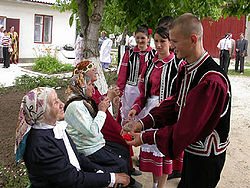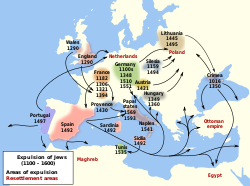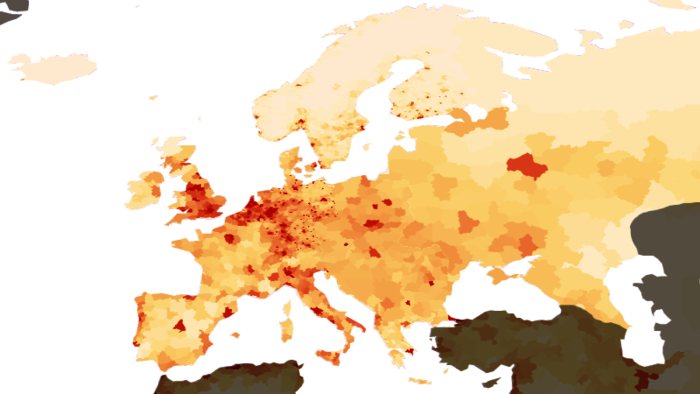| Country | Majority | % | Regional majorities | Minorities [a] |
|---|
 Albania Albania | Albanians | 97% [105] [106] | | Greeks ≈3%, [107] and other 2% (Aromanians, Romani, Macedonians, Montenegrins, Bulgarians, Bosniaks, Jews and Serbs). [108] |
 Armenia [b] Armenia [b] | Armenians [c] | 98.1% | | Russians, Yazidis, Assyrians, Kurds, Greeks, Jews, Loms and Ukrainians. |
 Austria Austria | Austrians | 92% | | |
 Azerbaijan [d] Azerbaijan [d] | Azerbaijanis [c] | 91.6% | Lezgin 2%, Armenians 1.35% | Russians, Tats, Talysh, Kurds, Avars, Turks, Tatars, Ukrainians, and Poles. |
 Belarus Belarus | Belarusians | 83.7% | | Russians 8.3%, Poles 3.1%, Ukrainians 1.7%, and other 3.2%. (2009 census) |
 Belgium Belgium | Flemings | 58% | Walloons 31%, Germans 1% | mixed or other (i.e. Luxembourgers, Eastern Europeans or Southern Europeans, Africans and Asians, and Latin Americans) 10%. |
 Bosnia and Herzegovina Bosnia and Herzegovina | Bosniaks | 50.1% | Serbs 30.8%, Croats 15.4% | Albanians, Macedonians, Roma and Turks (2013 census) |
 Bulgaria Bulgaria | Bulgarians | 84% | Turks 8.8% | Roma 5%, Others 2% (including Russian, Armenian, Crimean Tatars, Sarakatsani, and "Vlach" [Romanians and Aromanians]). (2001 census) [109] |
 Croatia Croatia | Croats | 91.6% | | Serbs 3.2%, other 5.2% (including Bosniaks, Roma, Albanians, Italians, Hungarians and others). (2021 census) [110] |
 Czech Republic Czech Republic | Czechs | 90.4% | Moravians 3.7% | Slovaks 1.9%, and other 4%. (including Bulgarians, Croats, Germans, Poles, Roma and Vietnamese). (2001 census) |
 Denmark Denmark | Danes | 90% [111] | Faroese, Greenlanders | other Scandinavians, Germans, Frisians, other European, Indigenous Greenlandic people and others. |
 Estonia Estonia | Estonians | 68.8% | | Russians 24.2% , Ukrainians 2.0%, Belarusians 0.8%, Finns 0.6%. |
 Finland Finland | Finns | 93.4% | Finland-Swedes 5.6%, Sami 0.1% | Russians 1.1%, Estonians 0.7%, Romani 0.1% and Latvians 0.5%. (2019) also Somalis, Germans, Macedonians and Iranians |
 Georgia [d] [112] Georgia [d] [112] | Georgians [c] | 86.8% | | Russians, Azerbaijanis, Kurds, Tats, Armenians, Ukrainians, Greeks, Ossetians |
 Greece Greece | Greeks | 93% | includes linguistic minorities 3% | Albanians 4% and other (i.e. Aromanians, Megleno-Romanians, Cretan Turks and Macedonian/Greek Slavic 3%. (2001 census) [e] |
 Hungary Hungary | Hungarians | 92.3% | | Romani 1.9%, Germans 1.2%, other (i.e. Croats, Romanians, Bulgarians, Turks and Rusyns) or unknown 4.6%. (2001 census) |
 Iceland Iceland | Icelanders | 91% | | other (non-native/immigrants – mainly Polish, Lithuanians, Danes, Germans and Latvians) 9%. [113] |
 Ireland Ireland | Irish | 87.4% | Ulster Scots and Irish Travellers 1.6% | other white (large numbers of Lithuanian, Latvian, Polish and Ukrainian migration) 7.5%, Asian 1.3%, black 1.1%, mixed 1.1%. (2006 census) |
 Italy Italy | Italians | 91.7% | South Tyroleans in South Tyrol (South Tyroleans and Ladins), Franco-Provençal in Aosta Valley and Valmaggiore [ it ] (northwestern Apulia) | Historical ethno-linguistic minorities (Sardinian, French, Occitan, Arpitan, Croatian, Albanian, Catalan, Austrian, Greek, Ladin, Friulian, Slovene and Roma minorities), [114] [115] regional language native speakers (Gallo-Italic, Venetian, Neapolitan, Sicilian), [116] other Europeans (mostly Romanians, Albanians, Ukrainians and Polish) 4%, North Africans 1% and others (i.e. Chinese, Filipino, Indian, Black African and Latin American) 2.5%. [117] [118] [119] [120] |
 Kazakhstan [d] Kazakhstan [d] | Kazakhs [c] | 63.1% | Russians 23.7% | Uzbeks, Ukrainians, Uyghurs, Tatars, Kyrgyz, Tajiks, Germans, Poles and Koreans. |
 Kosovo [f] Kosovo [f] | Albanians | 92% | Serbs 4% | other 4% (Bosniaks, Gorani, Croats, Jews, Romani, Turks and Ashkali and Egyptians). |
 Latvia Latvia | Latvians | 62.1% [121] | Livonians 0.1% | Russians 26.9%, Belarusian 3.3%, Ukrainian 2.2%, Polish 2.2%, Lithuanian 1.2%, and other 2.0%. (2011) |
 Lithuania Lithuania | Lithuanians | 84.61% | Poles 6.53% | Russians 5.02%, Belarusians 1.00%, Ukrainians 0.50%, other 2.34% (2021 census) |
 Malta Malta | Maltese | 95.3% [122] | | |
 Moldova Moldova | Moldovans [g] | 75.1% | Gagauzs 4.6%, Bulgarians 1.9% | Romanians [g] 7%, Ukrainians 6.6%, Russians 4.1%, and other 0.8% (2014 census). |
 Montenegro Montenegro | Montenegrins | 41.1% | Serbs 32.9% | Bosniaks 9.5%, Albanians 5%, and other (Croats, Russians (2.1%). (2023 census) |
 Netherlands Netherlands | Dutch | 72.8% | Frisians 2.6% | Turks 2.4%, Moroccans 2.4%, Surinamese 2.1%, Indonesians 2% |
 North Macedonia North Macedonia | Macedonians | 64% | Albanians 25.2%, Turks 4% | Romani 2.7%, Serbs 1.8%, and other (i.e. Aromanians, Greeks, Bulgarians, Megleno-Romanians, Gorani, and Croats) 2.2%. (2002 census) |
 Norway Norway | Norwegians [h] | 85–87% | Sami 0.7% [i] [123] Kvens 0.2% [124] | Poles 2.10%. A variety of other ethnicities with background from 219 countries that together make up approximately 15% (Swedes, Danes, Somalis, Syrians, Kurds, Vietnamese, Germans, Lithuanians, Russians and different South Asian ethnicities) (2020). [125] |
 Poland Poland | Poles | 98.59% [126] | Silesians 0.6%, Kashubians 0.04%, Lemkos 0.02% | Ukrainians 0.17%, Belarusians 0.11%, and Germans 0.11%, along with Romani, Lithuanians, Russians, Jews, Slovaks, Vietnamese, Czechs |
 Portugal Portugal | Portuguese | 95% | Portuguese Mirandese speakers 15.000~ (i.e. Mirandese-language speakers) | other 5% – other Europeans (British, German, French, Spanish, Romanians, Bulgarians, Hungarians, Croats, Ukrainians, Moldavians, Russians, Serbs, Kosovars and Albanians); Africans from Portuguese-speaking Africa, Brazilians, Chinese, Indians, Jews, Portuguese Gypsies and Latin Americans. |
 Romania Romania | Romanians | 83.4% | Hungarians 6.1% | Romani 3.0%, Germans 0.2%, Ukrainians 0.2%, Turks 0.2%, Russians 0.1% (2011 census) |
 Russia [d] Russia [d] | Russians | 81% | Tatars 3.9%, Chuvashes 1%, Chechens 1%, Ossetians 0.4%, Kabardin 0.4%, Ingushes 0.3%, Kalmyks 0.1% | Ukrainians 1.4%, Bashkir 1.2%, Armenians 0.9%, Avars 0.7%, Mordvins 0.5% and other. (2010 census, includes Asian Russia, excludes unspecified people (3.94% of population)). [127] [128] |
 Serbia [j] Serbia [j] | Serbs | 80.6% | | Hungarians 2.7%, Bosniaks 2.3%, Roma 2%, Albanians 0.9%, Slovaks 0.6%, Croats 0.6%, Yugoslavs 0.4%, Romanians 0.3%, Vlachs 0.3%, Montenegrins 0.3%, Macedonians 0.2%, Bulgarians 0.2%, Rusyns 0.1% (2022 census). |
 Slovakia Slovakia | Slovaks | 86% | Hungarians 9.7% | Romani 1.7%, Rusyn/Ukrainian 1%, other and unspecified 1.8% (2001 census) |
 Slovenia Slovenia | Slovenes | 83.1% | | Serbs 2%, Croats 1.8%, Bosniaks 1.1%, other (Dalmatian Italians, ethnic Germans, Hungarians and Romanians) and/or unspecified 12% (2002 census). |
 Sweden Sweden | Swedes | 88% | Finns (Tornedalians) | foreign-born or first-generation immigrants: Finns (Sweden-Finns), Yugoslavs (Serbs, Croats, and Bosniaks), Danes, Norwegians, Russians, Syrians, Lebanese, Syriacs, Greeks, Turks, Iranians, Iraqis, Pakistanis, Thais, Koreans, and Chileans. [129] [130] |
 Switzerland Switzerland | Swiss Germans | 65% [131] | French 18%, Italians 10% [131] | Romansh people in Grisons |
 Turkey [d] Turkey [d] | Turks [c] | 75% | Kurds 18% | Other 7%: Albanians, Syrians, Armenians (including Hemshin), Assyrians, Azerbaijanis, Bosniaks, Bulgarians (including Pomaks), Chechens, Circassians, Crimean Tatars, Georgians (including Laz), Greeks, Romani, Ossetians and Zaza. |
 Ukraine Ukraine | Ukrainians | 77.8% | Russians 17.3% | Belarusians 0.6%, Moldovans [g] 0.5%, Crimean Tatars 0.5%, Bulgarians 0.4%, Hungarians 0.3%, Romanians 0.3%, Poles 0.3%, Jews 0.2%, Armenians 0.1%, Urums 0.1% and other 1.8% (2001 census). |












